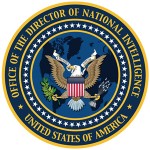Open letter to Mike Resnick, Sr. Director, Information Sharing Policy, EO of the President
 I just finished reading of your appointment on the FederalNews Radio website. As you begin your review of the state of information sharing and the ISE, I would like to offer up some thoughts as someone who has been an information sharing evangelist for nearly a decade. here are seven points to consider:
I just finished reading of your appointment on the FederalNews Radio website. As you begin your review of the state of information sharing and the ISE, I would like to offer up some thoughts as someone who has been an information sharing evangelist for nearly a decade. here are seven points to consider:
- Resist the urge to see information sharing as an outcome. Information sharing is a means to an end, not the end itself. Each federal agency, every state and regional fusion center, and all law enforcement intelligence units should have a clear set of information requirements, questions if you will, that information sharing and the intelligence process should work to answer–hold agencies accountable for having clear and valid requirements. This has been a common practice in the intelligence community for decades and should be a practice for all information sharing elements.
- Build clear accountability into the information sharing process. Every federal agency, fusion center and law enforcement agency should have one person, preferably an impassioned, well-respected leader, that can ensure that their agencies requirements are well documented and communicated horizontally across federal boundaries and vertically to local, state, and municipal agencies, and (where applicable) private sector organizations.
- Establish clear linkage of information sharing to agency operational performance measures. Just as staffing, information technology, facilities, and utilities are seen as strategic resources in a performance-based budget, information sharing must be seen as a resource to be strategically used to help an agency achieve its mission. When measuring the success of information sharing, focus on the extent to which it helped achieve agency goals–just as counting cases in law enforcement is a misleading way to judge public safety success, counting RFIs, records shared, SARs submitted is not a good way to gauge information sharing success–successful information sharing can only be measured through the extent to which it helps agencies (at all levels) achieve their operational goals.
- Discourage agencies from using stovepiped portals for information sharing. All shareable data should be available as a “service” for consumer agencies to ingest into their systems and not through a dedicated portal that users will need a discrete login to access. You can read my previous “Portal-mania” blog post for more detail here, but all federal agencies should be required to make their data accessible through National information Exchange Model (NIEM) based web services. This will enable consumer agencies to integrate multiple data streams into their workflow and will reduce the number of websites and portals analysts are required to access to perform their work.
- Give the same amount of attention to what is shared and how it is shared. Over the last few years, a significant amount of effort has gone into how information is shared at the expense of understanding the depth and breadth of information actually being shared. Many regional and national information sharing efforts still only contain basic levels of information, or worse are just pointer systems that require additional human effort to gain access to the actual record. Encourage agencies to communicate to each other what specific information is being shared, and what is not being shared, and help everyone understand the consequences of their decisions.
- Encourage maximum use of NIEM and the Information Exchange Package Descriptions (IEPD) contained it its clearinghouse. NIEM has emerged as the dictionary of shareable data elements. When you string together sets of these data elements to satisfy a specific business need, an IEPD is born. The NIEM IEPD clearinghouse contains more than 150 IEPDs, many of which apply to national security, law enforcement and public safety missions. While many federal agencies have pledged their support of NIEM, more effort is needed to ensure that they first seek to use IEPDs already contained in the clearinghouse and do not develop one-off IEPDs designed to meet very narrow applications.
- Finally, foster a culture of transparency to help communicate an appreciation of personal civil rights and civil liberties. All information sharing and intelligence operations should engage in proactive efforts to help alleviate any fears that individual privacy and liberties are violated by any of the actions taken by those agencies. In my September 3, 2009 blog posting I list ten questions a fusion center director should ask of their own intelligence operations. I’d like to offer up these questions as a beginning framework for any information sharing or intelligence operation. They also serve as a good framework for evaluating the extent to which information sharing and intelligence operations are in fact seriously working to do the right thing.
In closing, I hope you can see how these seven points help to frame how you might structure a results oriented evaluation of information sharing across our federal agencies and with our state and regional fusion center, and private sector partners. Taken together you will be able to report the extent to which agencies have:
- Documented their information sharing requirements – what needs to be shared;
- Someone who can be directly held accountable for effective and proper information sharing;
- Linked their need for information to specific operational goals and strategies;
- Implemented mechanisms that makes it easy for other agencies to access their information;
- Ensured that they are sharing the right information (most meaningful) information;
- Taken advantage of NIEM as a way to save money and expedite information sharing; and
- Taken measures to proactively diffuse public (and media) perceptions of information misuse.
I wish you well in your new role as Senior Director for Information Sharing Policy.
Regards,
Chuck Georgo
chuck@nowheretohide.org